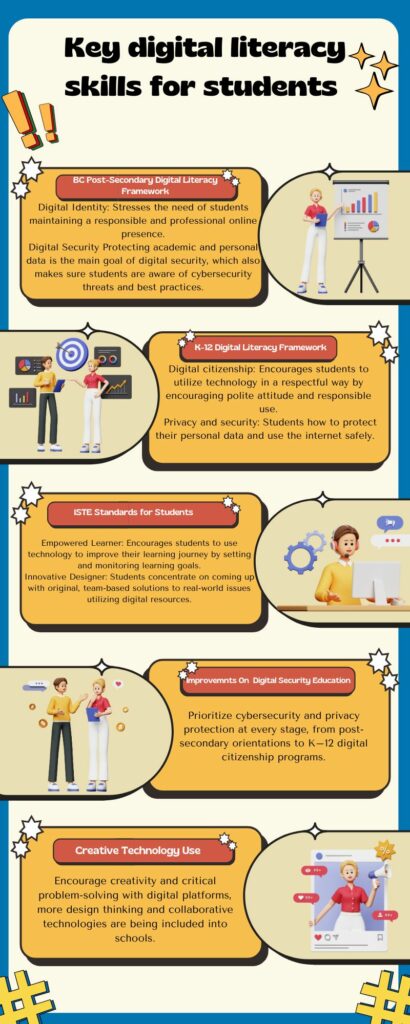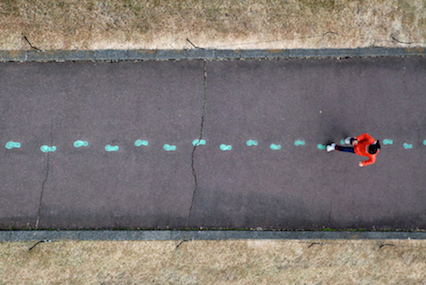My week four reflection breaks down what I have learned about digital literacy, particularly for students in B.C.
BC Post-Secondary Digital Literacy Framework- This is the course’s main objective. It offers an organized approach to build the digital skills required for college and beyond. Skills in communication, problem-solving, and digital citizenship are outlined in the framework.
Another important framework for K–12 children is the BC Digital Literacy Framework (K12). It provides students the fundamental digital literacy skills they need to succeed in the digital age.
Students’ ISTE Standards- With an emphasis on equipping students to be engaged, responsible digital citizens and to utilize technology for creativity, problem-solving, and teamwork, this framework from the International Society for Technology in Education provides worldwide standards.

This flow chart breaks down the different articles from week four, it also includes creative technology use and areas for improvements.
BC Post-Secondary Digital Literacy Framework – BC Digital Literacy Framework (K12) – International Society for Technology in Education (ISTE) Standards for Students.
Digital Learning Strategy highlights
- Increasing internet access might help close socioeconomic inequalities by removing financial, social, cultural, and geographic obstacles.
promoting system-level cooperation across organizations, particularly those required by First Nations, to lower expenses and enhance digital infrastructure.
“Students and people working in the post-secondary system overcame challenges throughout the COVID-19 pandemic, showcasing the system’s resilience, adaptability, and strength.” This illustrates how, in spite of the pandemic’s difficulties, the post-secondary community in B.C was able to make the huge shift to digital methods of learning. It emphasizes how the move to online education has now become a permanent fixture in the field of education. BC Ministry of Post-Secondary Education and Future Skills Digital Learning Strategy
